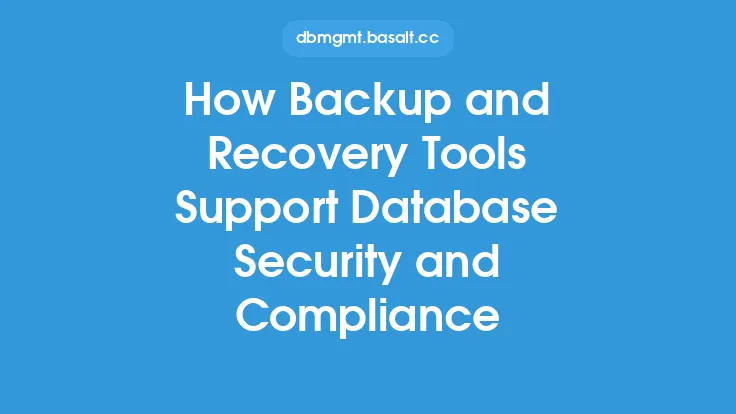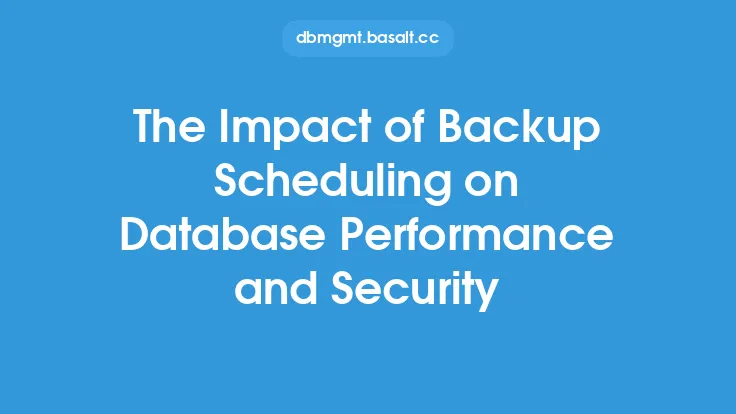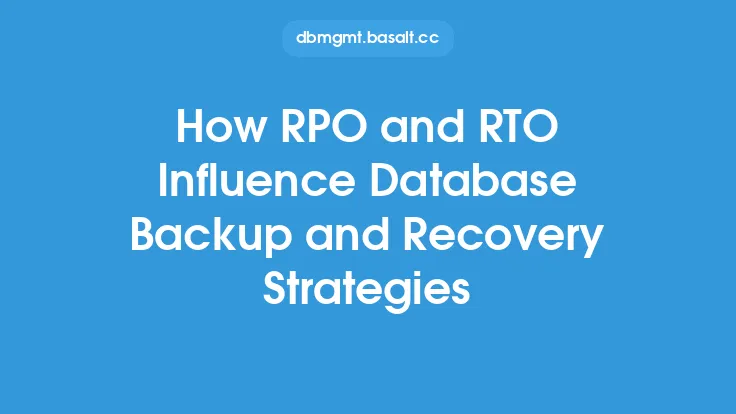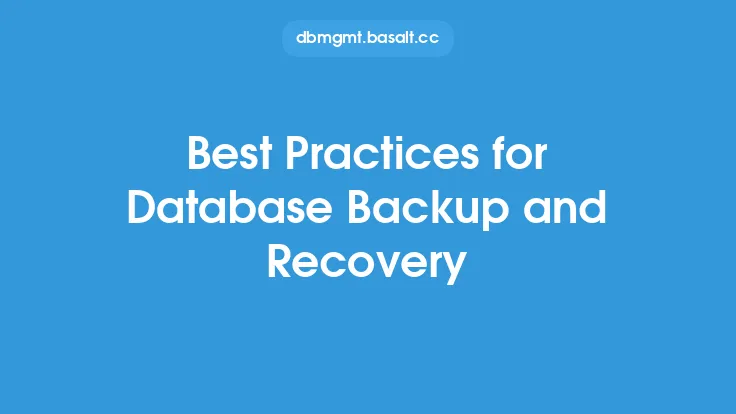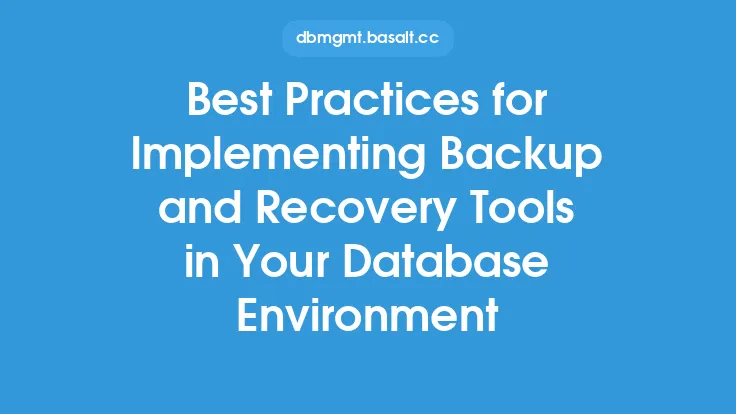Database backup and recovery are critical components of a comprehensive database security strategy. Backups provide a safeguard against data loss due to hardware failures, software corruption, or malicious attacks, while recovery processes ensure that data can be restored to a consistent state in the event of a disaster. However, backups and recovery processes also introduce security considerations that must be carefully managed to prevent unauthorized access, data breaches, or other security incidents.
Introduction to Database Backup Security
Database backups contain sensitive data, including personal identifiable information, financial data, and other confidential information. As such, backups must be protected with the same level of security as the live database. This includes encrypting backup data, both in transit and at rest, to prevent unauthorized access. Encryption algorithms, such as AES, should be used to protect backup data, and access to backup files should be restricted to authorized personnel only.
Database Recovery Security Considerations
Database recovery processes also introduce security considerations. Recovery processes often require privileged access to the database, which can be exploited by malicious actors if not properly secured. To mitigate this risk, recovery processes should be designed to use least privilege access, where possible, and access to recovery tools and scripts should be restricted to authorized personnel only. Additionally, recovery processes should be monitored and audited to detect any suspicious activity.
Backup Storage Security
Backup storage is a critical component of database backup and recovery security. Backup files should be stored in a secure location, such as an encrypted file system or a secure cloud storage service. Access to backup storage should be restricted to authorized personnel only, and backup files should be protected against unauthorized deletion or modification. Backup storage should also be designed to ensure data durability and availability, with multiple copies of backup files stored in different locations.
Network Transmission Security
When transmitting backup files over a network, security considerations must be taken into account. Backup files should be encrypted in transit, using protocols such as SSL/TLS, to prevent eavesdropping and tampering. Network transmission should also be designed to ensure data integrity, with checksums or digital signatures used to verify the integrity of backup files.
Access Control and Authentication
Access control and authentication are critical components of database backup and recovery security. Access to backup files, recovery tools, and scripts should be restricted to authorized personnel only, using mechanisms such as role-based access control (RBAC) or attribute-based access control (ABAC). Authentication mechanisms, such as passwords or multi-factor authentication, should be used to verify the identity of users accessing backup files or recovery tools.
Monitoring and Auditing
Monitoring and auditing are essential components of database backup and recovery security. Backup and recovery processes should be monitored to detect any suspicious activity, such as unauthorized access to backup files or recovery tools. Auditing mechanisms, such as logging and alerting, should be used to track all access to backup files and recovery tools, and to detect any security incidents.
Testing and Validation
Testing and validation are critical components of database backup and recovery security. Backup and recovery processes should be tested regularly to ensure that they are working correctly and that data can be restored to a consistent state in the event of a disaster. Validation mechanisms, such as data integrity checks, should be used to verify the integrity of backup files and to detect any data corruption or tampering.
Best Practices for Database Backup and Recovery Security
To ensure the security of database backups and recovery processes, several best practices should be followed. These include:
- Encrypting backup data, both in transit and at rest
- Restricting access to backup files and recovery tools to authorized personnel only
- Using least privilege access for recovery processes
- Monitoring and auditing backup and recovery processes
- Testing and validating backup and recovery processes regularly
- Storing backup files in a secure location, such as an encrypted file system or a secure cloud storage service
- Using secure network transmission protocols, such as SSL/TLS, to protect backup files in transit.
Conclusion
Database backup and recovery security are critical components of a comprehensive database security strategy. By following best practices, such as encrypting backup data, restricting access to backup files and recovery tools, and monitoring and auditing backup and recovery processes, organizations can ensure the security and integrity of their database backups and recovery processes. Regular testing and validation of backup and recovery processes can also help to ensure that data can be restored to a consistent state in the event of a disaster. By prioritizing database backup and recovery security, organizations can protect their sensitive data and prevent security incidents.
